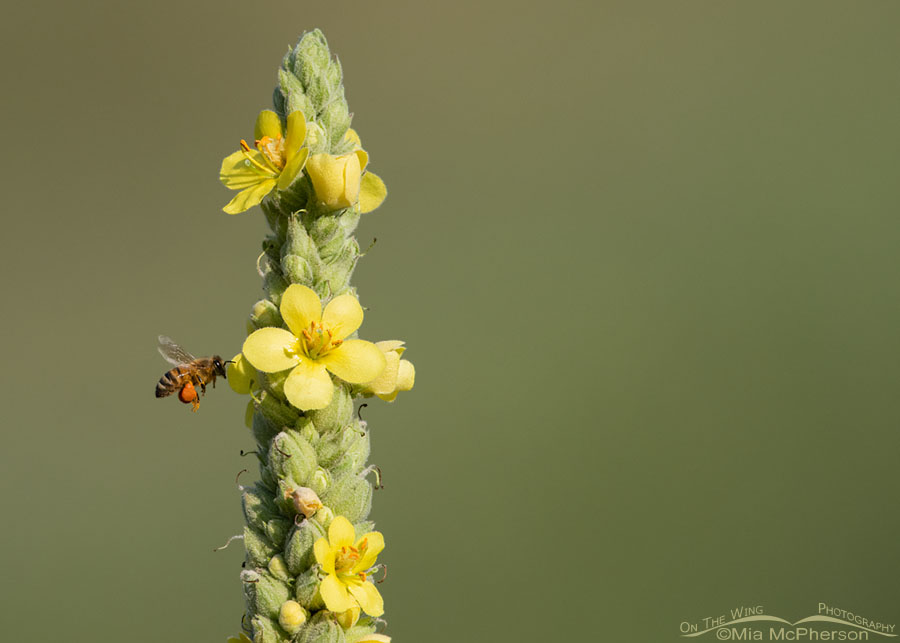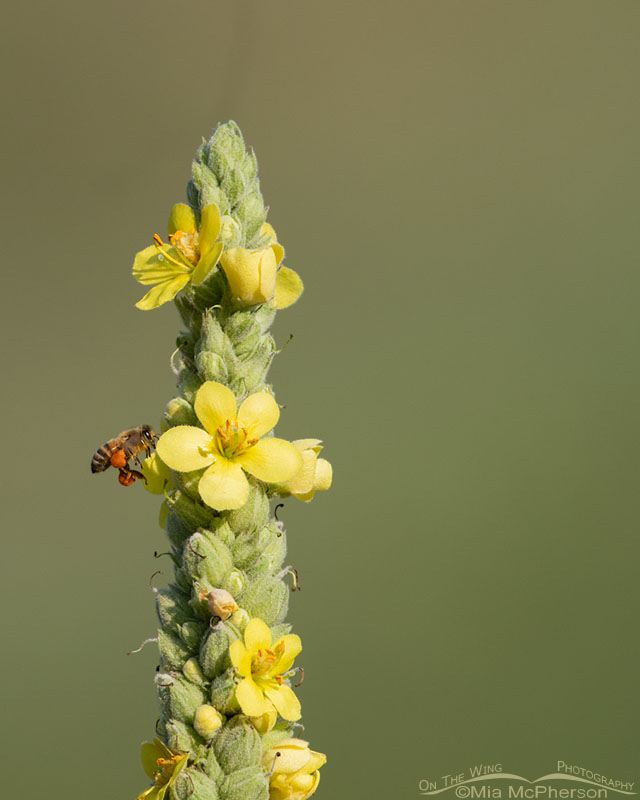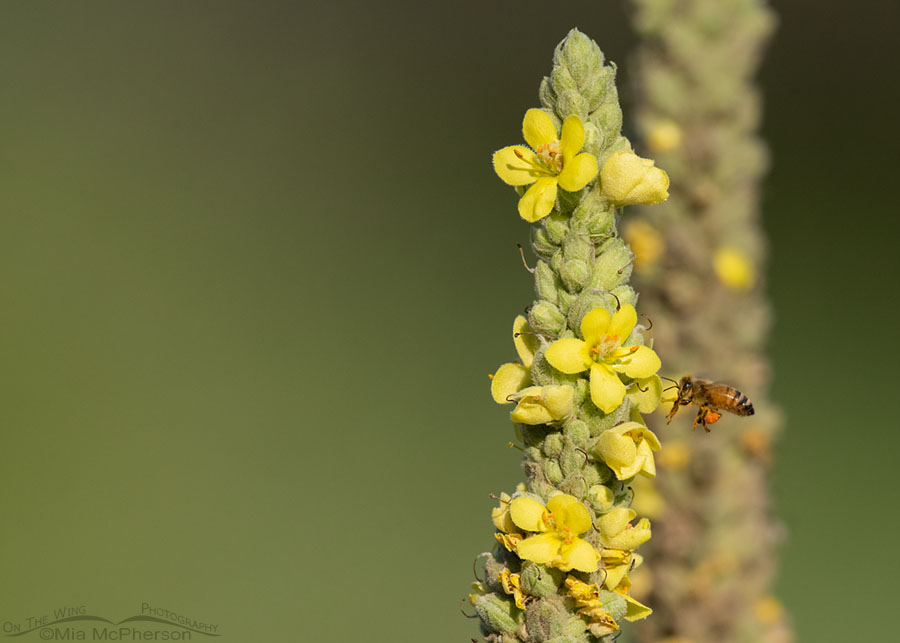 Western Honey Bee gathering pollen from a Common Mullein – Nikon D810, f7.1, 1/2000, ISO 640, Nikkor 500mm VR with 1.4x TC, natural light
Western Honey Bee gathering pollen from a Common Mullein – Nikon D810, f7.1, 1/2000, ISO 640, Nikkor 500mm VR with 1.4x TC, natural light
Both Common Mullein and the Western Honey Bee are introduced, non-native species yet I can’t resist photographing them when given the opportunity. Last week while looking for birds in the Wasatch Mountains I had Western Honey Bees and Common Mulleins in my viewfinder for a few moments.
The Common Mulleins provide pollen for our native bees as well as the introduced Western Honey Bees plus other birds and insects consume the seeds after the flowers are done blooming and other birds eat the insects that are found on the flower stalks and leaves. Common Mulleins aren’t all bad even though they aren’t native to North America.
 Western Honey Bee at a Common Mullein – Nikon D810, f7.1, 1/2000, ISO 640, Nikkor 500mm VR with 1.4x TC, natural light
Western Honey Bee at a Common Mullein – Nikon D810, f7.1, 1/2000, ISO 640, Nikkor 500mm VR with 1.4x TC, natural light
I guess the same could be said for the non-native Western Honey Bees, they aren’t all bad either. They pollinate native plants and produce honey that provides nourishment for other animals and insects.
But… As an invasive species, feral Western Honey Bees can be an environmental problem in some areas. Imported bees may displace native bees and birds, and may also promote reproduction of invasive plants ignored by native pollinators so they aren’t all good.
 Common Mullein and a Western Honey Bee – Nikon D810, f7.1, 1/2000, ISO 640, Nikkor 500mm VR with 1.4x TC, natural light
Common Mullein and a Western Honey Bee – Nikon D810, f7.1, 1/2000, ISO 640, Nikkor 500mm VR with 1.4x TC, natural light
I still photograph the mulleins and the honey bees because they are a part of the environment that I live and photograph in.
Life is good.
Mia
Click here to see more of my insect and spider photos. Click here to see more of my flower, shrub and tree photos.


I suspect that the introduced species do a LOT less damage than our own. Sometimes I think that most of our influences on the environment IS bad.
I had no idea the common mullein was introduced!
I’m guessing that is pollen on the back legs of the Western Honey Bee??? Beautiful shots. I didn’t know that Common Mullein is non-native. I’d guess, then, that the smaller and prettier Moth Mullein is non-native as well. Shucks!!